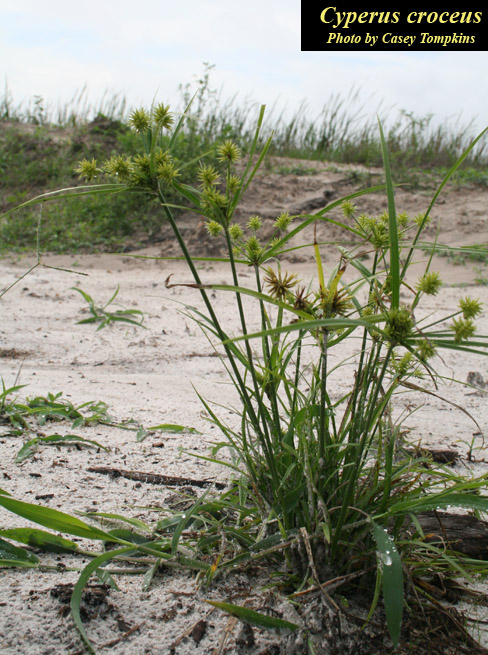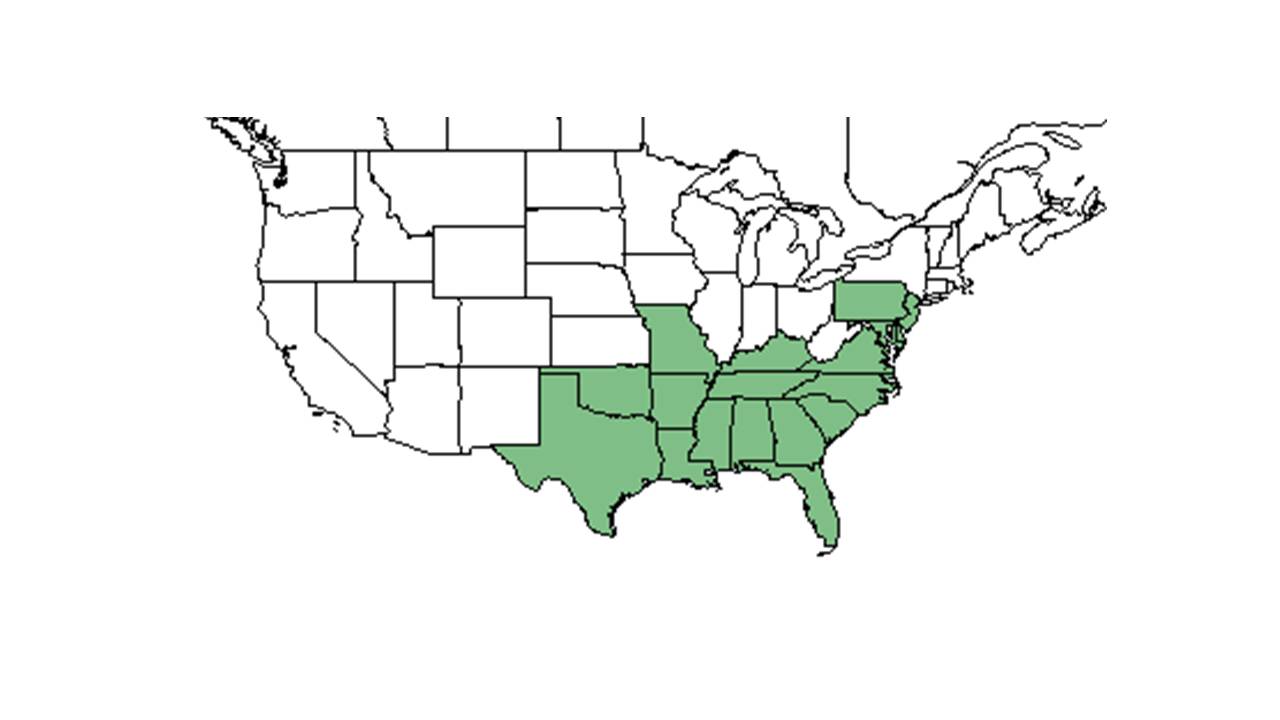Cyperus croceus
| Cyperus croceus | |
|---|---|

| |
| Photo by Casey Tompkins, Atlas of Florida Vascular Plants | |
| Scientific classification | |
| Kingdom: | Plantae |
| Division: | Magnoliophyta - Flowering plants |
| Class: | Liliopsida – Monocotyledons |
| Order: | Poales |
| Family: | Cyperaceae |
| Genus: | Cyperus |
| Species: | C. croceus |
| Binomial name | |
| Cyperus croceus Vahl | |

| |
| Natural range of Cyperus croceus from USDA NRCS Plants Database. | |
Common name: Baldwin's flatsedge
Contents
Taxonomic notes
Synonyms: Cyperus globosus Aublet; C. multiflorus (Britton) Small; C. retrorsus Chapman var. robustus (Böckler) Kükenthal; C. plankii Britton.[1]
Varieties: none.[1]
Description
A description of Cyperus croceus is provided in The Flora of North America. This species is a perennial graminoid.
Distribution
Ecology
It is one of the first plants to appear after clear-cutting; it can appear within three years.[2]
Habitat
Cyperus croceus requires a semi-tropical climate and can dwell in temperatures from -1 to 37 degrees Celsius. It prefers moist areas, including fluvial environments and floodplains, but can occur in a range of soils, from sand, to sandy peat, loam, and drying loamy sand.[3]
It can be found in mixed-pine forests,[2] upland hardwood forests, swampy woodlands, and dry ponds. It can also occur in disturbed habitat such as roadsides, citrus groves, spoil banks, and pastures.[3]
Associated species includes Alternanthera, Carex, Cephalanthus, Polygonum.[3]
Phenology
C. croceus has been observed flowering and fruiting in May through November with peak inflorerscence in August.[4][3]
Fire ecology
It is fire tolerant.[3]
Conservation, cultivation, and restoration
Cultural use
Photo Gallery
References and notes
- ↑ 1.0 1.1 Weakley, A.S. 2015. Flora of the southern and mid-atlantic states. Working Draft of 21 May 2015. University of North Carolina at Chapel Hill, Chapel Hill, North Carolina.
- ↑ 2.0 2.1 Archer, J. K., D. L. Miller, et al. (2007). "Changes in understory vegetation and soil characteristics following silvicultural activities in a southeastern mixed pine forest." Journal of the Torrey Botanical Society 134: 489-504.
- ↑ 3.0 3.1 3.2 3.3 3.4 Florida State University Robert K. Godfrey Herbarium database. URL: http://herbarium.bio.fsu.edu. Last accessed: June 2014. Collectors: Loran C. Anderson, Richard Carter, Angus Gholson, Robert K. Godfrey, N. C. Henderson, M. Kral, R. Kral, H. Kurz, S. W. Leonard, J. B. McFarlin, Richard S. Mitchell, P. L. Redfearn, Paul O. Schallert, H. L. Blomquist, William R. Stimson, R. A. Norris, K. E. Blum, Ed Keppner, and Lisa Keppner. States and Counties: Florida: Calhoun, Columbia, Dade, Dixie, Escambia, Franklin, Hernando, Highlands, Indian River, Jackson, Jefferson, Lamar, Leon, Liberty, Martin, Okaloosa, Orange, Palm Beach, Pasco, Santa Rosa, Seminole, St. Lucie, Sumter, Wakulla, and Walton. Georgia: Clinch
- ↑ Nelson, G. PanFlora: Plant data for the eastern United States with emphasis on the Southeastern Coastal Plains, Florida, and the Florida Panhandle. www.gilnelson.com/PanFlora/ Accessed: 8 DEC 2016